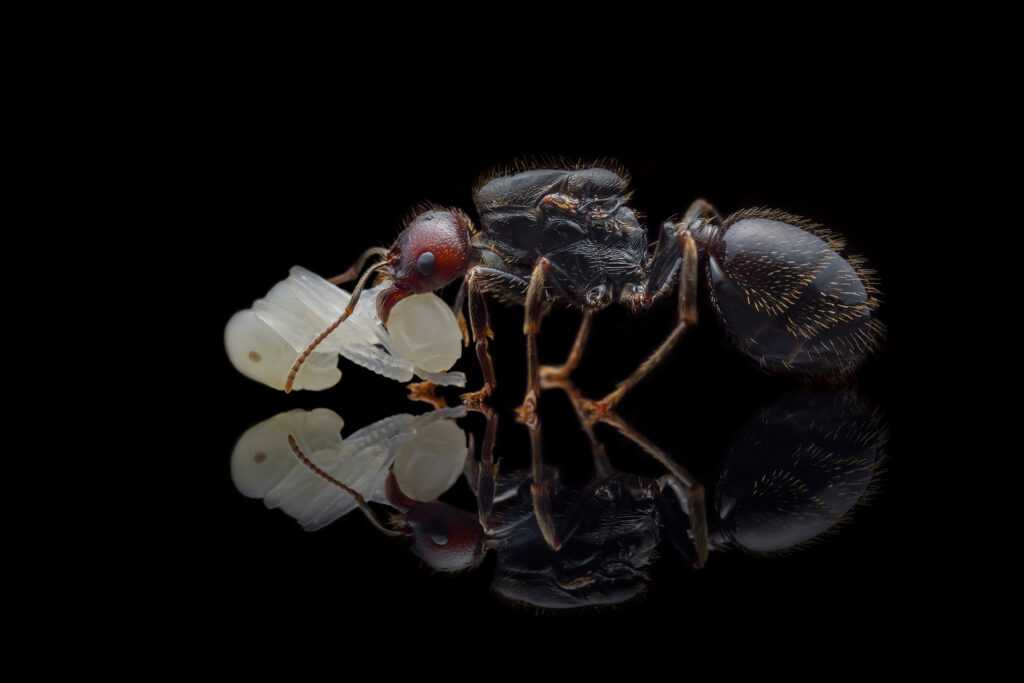Paltothyreus tarsatus: The Black Ant with a Unique Odor
In this product description, we will explore the various aspects of Paltothyreus tarsatus, a captivating ant species known for its distinct characteristics and peculiar odor. Learn more about its colony type, size, development speed, nutrition, and recommended nests for breeding.
Colony Type and Size
Paltothyreus tarsatus exhibits a polygynous colony type, allowing for multiple queens within each colony. This unique characteristic sets them apart from other ant species. With colony sizes reaching up to 5000 workers, the presence of multiple queens ensures a harmonious balance within the ant community.
Size and Color
The queen ants of Paltothyreus tarsatus measure between 23-25 mm, making them relatively larger compared to other ant species. Worker ants have an average size ranging from 15-22 mm. Both the queens and workers of Paltothyreus tarsatus possess a distinct black coloration, making them easily distinguishable from other ants.
Development Speed
Paltothyreus tarsatus is known for its slower development speed compared to other ant species. This characteristic adds to their uniqueness and makes them a fascinating species to observe and study. By understanding their development process, ant enthusiasts can gain valuable insights into the intricacies of their behavior and biology.
Nutrition
Paltothyreus tarsatus sustains itself through a diverse diet consisting of forage insects such as cockroaches and crickets, as well as fruits and termites. This varied nutrition ensures the health and vitality of the ant colony, allowing them to thrive in their natural habitat. Observing their feeding behaviors can provide valuable knowledge about their foraging strategies and preferences.
Humidity and Temperature
Creating the optimal environment for Paltothyreus tarsatus is crucial to their well-being. The recommended humidity levels for their habitat are 50-60% in the arena and 60-80% in the nest. Maintaining these humidity levels ensures the ants can thrive and carry out their activities without any hindrances. Additionally, the ideal temperature range for Paltothyreus tarsatus is 22-30 °C in the arena and 25-28 °C in the nest. These temperature conditions mimic their natural habitat and promote their overall health and productivity.
Characteristics of the Species
Paltothyreus tarsatus possesses a unique characteristic that sets it apart from other ant species – a distinct smell reminiscent of “rotten eggs.” This odor is caused by the secretions of the mandibular glands found in these ants. While the origin and purpose of this odor remain the subject of scientific study, it adds to the intrigue and fascination surrounding this species.
Recommended Nests for Breeding
When it comes to breeding Paltothyreus tarsatus, providing the right kind of nest is crucial for their survival and development. Acrylic, gypsum, and aerated concrete nests are the recommended nesting materials for these ants. These materials offer the ideal environment for the colony, ensuring optimal conditions for brood rearing, food storage, and general activities.
In conclusion, Paltothyreus tarsatus is a captivating ant species with unique characteristics and behaviors. Its polygynous colony type, distinct size, slow development speed, varied diet, and peculiar odor make it an intriguing subject for ant enthusiasts and researchers. By understanding their specific habitat requirements and providing suitable nesting materials, ant keepers can create a thriving environment for Paltothyreus tarsatus, allowing them to observe and learn from these remarkable creatures.

















Reviews
There are no reviews yet.